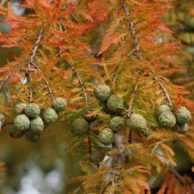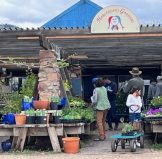 Dear Friends and Fellow Gardeners,
Dear Friends and Fellow Gardeners,
Welcome to Autumn and to Harlequin’s Gardens 2024 Fall Plant Sale!
Whether we call it xeriscape, water-wise or Western Gardening, it is smart for us to water sparingly in our gardens. Water is a very limited resource, especially here in the West. In May it rained .44” in Boulder and 1.7” in Denver; in June .27” in Boulder, .36” in Denver. And it has been a dry July and hot. If (when) there is a drought and we have trained our gardens for low-water, they will survive. When we have ample rainfall (usually not more than 20”-22” in a year), our gardens will be full of flowers and fruit. Can we really train our gardens for hotter, dryer conditions? Yes. But it’s not as easy as turning on the sprinkler.
[Read More]

 We’re seeing cherries everywhere we go this summer! There were so many on the trees in the Harlequin’s Wholesale area that our Retail Manager Beth just had to make a pie for our co-workers.
We’re seeing cherries everywhere we go this summer! There were so many on the trees in the Harlequin’s Wholesale area that our Retail Manager Beth just had to make a pie for our co-workers.



 We
We  Fire-wise landscaping should focus on creating a ‘defensible space’ around your home. In “Firewise Plant Materials,” a fact-sheet for the CO Cooperative Extension, F. C. Dennis defines this: “Defensible space is the area between a structure and an oncoming wildfire where nearby vegetation has been modified to reduce a wildfire’s intensity,” and therefore, reduces risk to property.
Fire-wise landscaping should focus on creating a ‘defensible space’ around your home. In “Firewise Plant Materials,” a fact-sheet for the CO Cooperative Extension, F. C. Dennis defines this: “Defensible space is the area between a structure and an oncoming wildfire where nearby vegetation has been modified to reduce a wildfire’s intensity,” and therefore, reduces risk to property. Acantholimon Ready for Sale!
Acantholimon Ready for Sale! It’s officially Summertime. We are struggling with an unprecedented June heat-wave and very low precipitation. But along with the heat, sun and lack of significant rainfall, there are some wonderful things happening that we can appreciate and be grateful for, like the bold, stand-out colors of summer blooms! Of the summer-blooming perennials we grow, both native and non-native, many are in bud or starting to bloom, are looking great and are ready now to bring out for sale. They ALL provide important sustenance for our pollinators, from tiny native bees, wasps and flies, to bumblebees, butterflies, and hummingbirds! And most are in 4” ‘deep pots’, easier to establish in the heat of the summer!
It’s officially Summertime. We are struggling with an unprecedented June heat-wave and very low precipitation. But along with the heat, sun and lack of significant rainfall, there are some wonderful things happening that we can appreciate and be grateful for, like the bold, stand-out colors of summer blooms! Of the summer-blooming perennials we grow, both native and non-native, many are in bud or starting to bloom, are looking great and are ready now to bring out for sale. They ALL provide important sustenance for our pollinators, from tiny native bees, wasps and flies, to bumblebees, butterflies, and hummingbirds! And most are in 4” ‘deep pots’, easier to establish in the heat of the summer! There are plenty of insects that eat plants and these can be damaging. At Harlequin’s we usually recommend supporting plant and soil health, creating diversity and allowing some insect damage before acting. With some pests, it is good to be prepared to act quickly, and sometimes there isn’t a good solution. Even poisons, which we never recommend, can be ineffective.
There are plenty of insects that eat plants and these can be damaging. At Harlequin’s we usually recommend supporting plant and soil health, creating diversity and allowing some insect damage before acting. With some pests, it is good to be prepared to act quickly, and sometimes there isn’t a good solution. Even poisons, which we never recommend, can be ineffective. Welcome to Summer! Experientially, summer began last week with several days of intense heat that were challenging for people, pets, other critters, and plants. But in terms of hours of sunlight, the longest day of the year in the Northern Hemisphere will occur this Thursday, June 20 at 2:50 pm here in Colorado, officially beginning our summer season. Mikl has some thoughts on one of the interesting opportunities the Summer Solstice offers for gardeners with trees and shrubs.
Welcome to Summer! Experientially, summer began last week with several days of intense heat that were challenging for people, pets, other critters, and plants. But in terms of hours of sunlight, the longest day of the year in the Northern Hemisphere will occur this Thursday, June 20 at 2:50 pm here in Colorado, officially beginning our summer season. Mikl has some thoughts on one of the interesting opportunities the Summer Solstice offers for gardeners with trees and shrubs.  With Summer come pest problems. Eggs hatch and spores germinate, and plants are food for all of us folks that don’t photosynthesize. So, what can we do? Share and defend, intelligently.
With Summer come pest problems. Eggs hatch and spores germinate, and plants are food for all of us folks that don’t photosynthesize. So, what can we do? Share and defend, intelligently. We’re celebrating all month, and we’d love to encourage you to support pollinators in your gardens.
We’re celebrating all month, and we’d love to encourage you to support pollinators in your gardens. 

 We finally got a chance to bring out our excellent and unique selection of Native Conifers! Most of them are special dwarf forms that can easily fit in a home garden. These accent plants can give structure and winter interest to elevate your garden design in all seasons.
We finally got a chance to bring out our excellent and unique selection of Native Conifers! Most of them are special dwarf forms that can easily fit in a home garden. These accent plants can give structure and winter interest to elevate your garden design in all seasons. We know that not all of customers live in a house with a yard. Many of you live in apartments or condominiums or townhomes and have only a balcony or a very small patio on which to grow anything outdoors. We would love to help you make the most of your outdoor space, even if it’s tiny.
We know that not all of customers live in a house with a yard. Many of you live in apartments or condominiums or townhomes and have only a balcony or a very small patio on which to grow anything outdoors. We would love to help you make the most of your outdoor space, even if it’s tiny.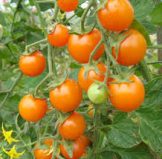
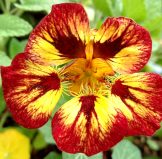
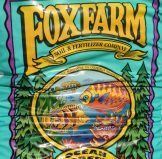
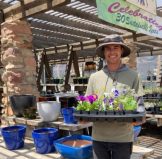 TERRACOTTA (unglazed, low-fire clay)
TERRACOTTA (unglazed, low-fire clay)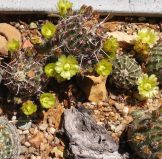
 It’s not ideal, but sometimes you have to plant in the middle of a heatwave. Fortunately, it can be done successfully, even here in the high, windy and dry zone. High temperatures, wind and strong sunlight cause water to evaporate from plant leaves faster than the roots can take up water.
It’s not ideal, but sometimes you have to plant in the middle of a heatwave. Fortunately, it can be done successfully, even here in the high, windy and dry zone. High temperatures, wind and strong sunlight cause water to evaporate from plant leaves faster than the roots can take up water.
 Right now, we have our biggest selection of highly desirable plants for the season. Some of them are unusual and available in limited quantities. This includes a number of very choice native perennials that are very hard to find and will sell out fast, like:
Right now, we have our biggest selection of highly desirable plants for the season. Some of them are unusual and available in limited quantities. This includes a number of very choice native perennials that are very hard to find and will sell out fast, like: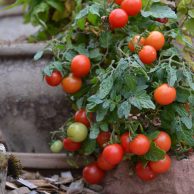
 So many very special experiences!
So many very special experiences!  XERISCAPE TREES AND SHRUBS for SUN
XERISCAPE TREES AND SHRUBS for SUN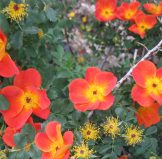
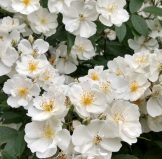
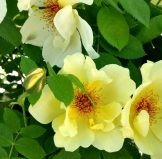
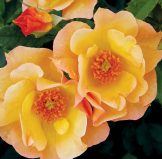
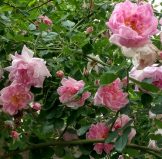
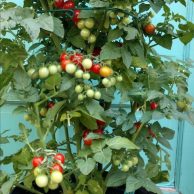 An article in the Guardian caught our eye with the alarming headline ‘Vegetables are Losing Their Nutrients’. It begins with the findings in a 2004 University of Texas study showing dramatic declines in the nutrient content of 43 foods, mostly vegetables, between the mid and late 20th century: green beans have seen a nearly 50% drop in calcium, while asparagus has lost almost half its Vitamin A content.
An article in the Guardian caught our eye with the alarming headline ‘Vegetables are Losing Their Nutrients’. It begins with the findings in a 2004 University of Texas study showing dramatic declines in the nutrient content of 43 foods, mostly vegetables, between the mid and late 20th century: green beans have seen a nearly 50% drop in calcium, while asparagus has lost almost half its Vitamin A content. Our compost tea will be ready this week, hopefully by Friday. Our tea has always been good, but this year we are working on making it even better. Please let us know if you can see good results from using it, and if it seems to be more effective.
Our compost tea will be ready this week, hopefully by Friday. Our tea has always been good, but this year we are working on making it even better. Please let us know if you can see good results from using it, and if it seems to be more effective.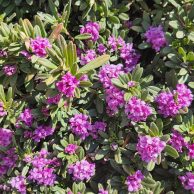
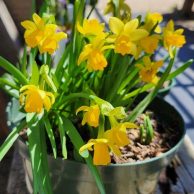 Miss planting bulbs last fall? No worries, we’ve got you covered. Choose from miniature daffodils, chionodoxa, hyacinth, tulips and more.
Miss planting bulbs last fall? No worries, we’ve got you covered. Choose from miniature daffodils, chionodoxa, hyacinth, tulips and more.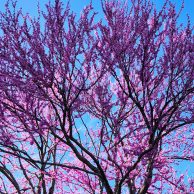 The fields and the foothills are turning green! So many trees are blooming or beginning to leaf out! There is so much energy bursting forth everywhere I look! After the lovely rain last weekend we emerged from our Sunday class to be greeted by the singing of frogs in a big puddle in the parking lot! How can they develop that fast???
The fields and the foothills are turning green! So many trees are blooming or beginning to leaf out! There is so much energy bursting forth everywhere I look! After the lovely rain last weekend we emerged from our Sunday class to be greeted by the singing of frogs in a big puddle in the parking lot! How can they develop that fast???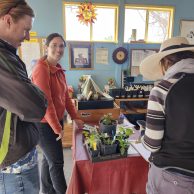
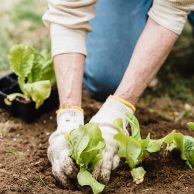 There’s much to do in the garden in April, from finalizing your garden plan, attending to your tools, to the annual spring clean up and pruning and lawn and vegetable garden prep, and PLANTING, DIVIDING and TRANSPLANTING!
There’s much to do in the garden in April, from finalizing your garden plan, attending to your tools, to the annual spring clean up and pruning and lawn and vegetable garden prep, and PLANTING, DIVIDING and TRANSPLANTING!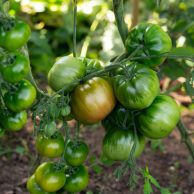
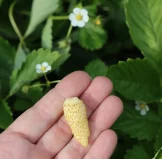
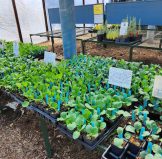 VEGETABLES
VEGETABLES

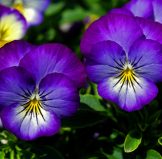
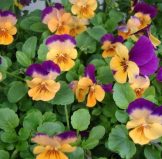
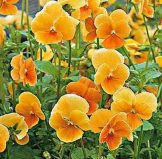
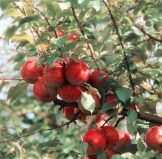 Lots of Fruit Trees: the best cherries, plums and apples for the Front Range!
Lots of Fruit Trees: the best cherries, plums and apples for the Front Range!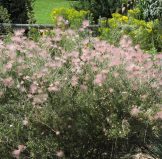
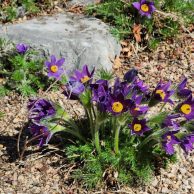
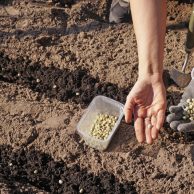 March is bringing us a characteristic tilt of the see-saw that this month always brings. Tank tops can go back in the drawer for a little while, as this week we will see night-time temperatures dipping into the mid-20s. We are expecting rain (~1.6 inches in Boulder, ~3 inches in Denver!), and heavy, wet snow, too. We’ve been here before; no need to panic. And we need the moisture!
March is bringing us a characteristic tilt of the see-saw that this month always brings. Tank tops can go back in the drawer for a little while, as this week we will see night-time temperatures dipping into the mid-20s. We are expecting rain (~1.6 inches in Boulder, ~3 inches in Denver!), and heavy, wet snow, too. We’ve been here before; no need to panic. And we need the moisture!
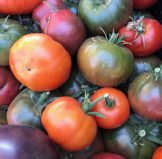 HARLEQUIN’S GARDENS 2025 TOMATO STARTS
HARLEQUIN’S GARDENS 2025 TOMATO STARTS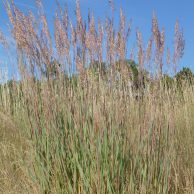
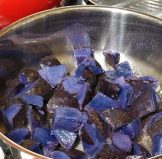
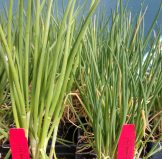
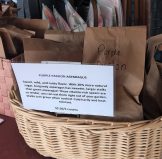
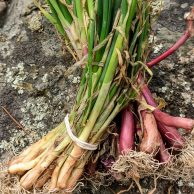
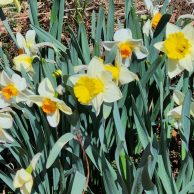 Dear Friends and Fellow Gardeners,
Dear Friends and Fellow Gardeners,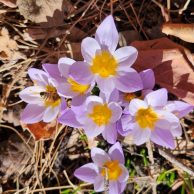
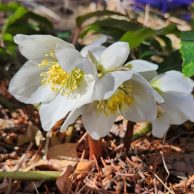
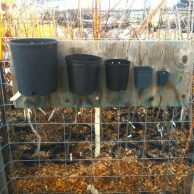 At Harlequin’s Gardens, we’ve been reusing and recycling black plastic nursery pots since day one. It is very important to us that we minimize our plastic waste. We have always encouraged our customers to bring back to us the nursery pots that came with the plants you purchased from us, and you have responded with enthusiasm, which we appreciate!
At Harlequin’s Gardens, we’ve been reusing and recycling black plastic nursery pots since day one. It is very important to us that we minimize our plastic waste. We have always encouraged our customers to bring back to us the nursery pots that came with the plants you purchased from us, and you have responded with enthusiasm, which we appreciate!
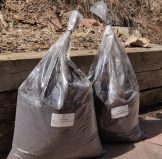
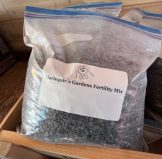
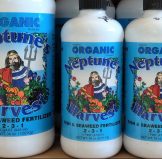 Neptune’s Harvest Organic Fertilizers
Neptune’s Harvest Organic Fertilizers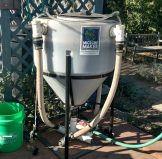 Compost Tea
Compost Tea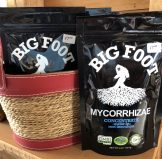 Big Foot Mycorrhizae
Big Foot Mycorrhizae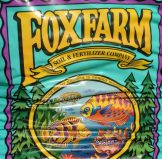 Fort Vee
Fort Vee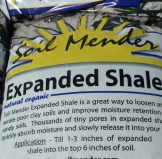 Expanded Shale
Expanded Shale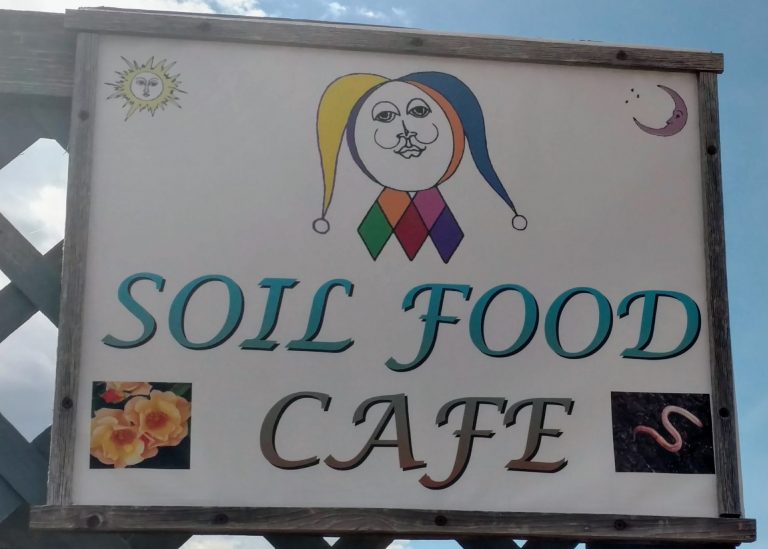
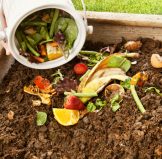 So even though there is nothing you can do at the moment, very soon, before it’s warm enough to plant, you can start making your bed sexy. Sexy soil sprouts seeds, grows roots and leaves, builds strength, makes flowers and fruit, and defends against pests.
So even though there is nothing you can do at the moment, very soon, before it’s warm enough to plant, you can start making your bed sexy. Sexy soil sprouts seeds, grows roots and leaves, builds strength, makes flowers and fruit, and defends against pests.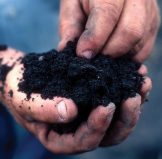 Let the biology do a lot of the work. It’s not hard to add more later; it’s very hard to correct too much. Keep the soil covered with mulch or living plants. Even native plants appreciate some compost to hold moisture and provide a light feeding when they are young. One more thing: avoid poisonous pesticides, fungicides and herbicides, like the plague. They kill or undermine the health of your allies—the soil life. Toxic pesticides are the opposite of sexy; they are like inviting the Grim Reaper into the bedroom. There are effective, non-toxic alternatives.
Let the biology do a lot of the work. It’s not hard to add more later; it’s very hard to correct too much. Keep the soil covered with mulch or living plants. Even native plants appreciate some compost to hold moisture and provide a light feeding when they are young. One more thing: avoid poisonous pesticides, fungicides and herbicides, like the plague. They kill or undermine the health of your allies—the soil life. Toxic pesticides are the opposite of sexy; they are like inviting the Grim Reaper into the bedroom. There are effective, non-toxic alternatives. What about no-till? Not turning the soil makes sense once you’ve got the soil life in a good environment. Then you don’t want to disturb the symbiotic networks. Then you can feed from the surface; good tilth and worms will take the food down.
What about no-till? Not turning the soil makes sense once you’ve got the soil life in a good environment. Then you don’t want to disturb the symbiotic networks. Then you can feed from the surface; good tilth and worms will take the food down.
